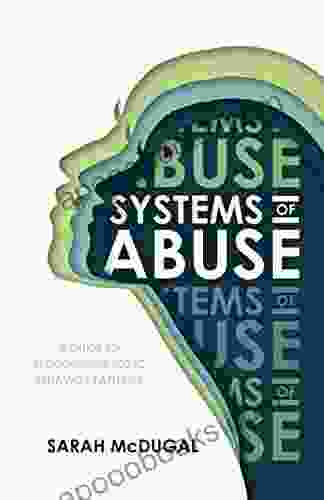Guide to Recognizing Toxic Behavior Patterns: Empowering You to Safeguard Your Well-being

In today's fast-paced and interconnected world, it is more important than ever to be aware of the damaging effects of toxic behaviors. These behaviors can not only impact our mental and emotional health but also slowly erode our self-esteem and overall well-being. This comprehensive guide is designed to equip you with the knowledge and strategies to identify and address toxic behavior patterns, empowering you to create a healthier and more fulfilling life.
Understanding Toxic Behavior Patterns
Toxic behavior patterns refer to a range of manipulative, disrespectful, and emotionally damaging actions that aim to control, dominate, or harm others. These patterns can manifest in various forms, from overt aggression and intimidation to more subtle tactics like gaslighting or emotional blackmail. Understanding the different types of toxic behavior is crucial for recognizing and addressing them effectively.
4.1 out of 5
| Language | : | English |
| File size | : | 3689 KB |
| Screen Reader | : | Supported |
| Print length | : | 46 pages |
| Lending | : | Enabled |
Common Types of Toxic Behavior
- Gaslighting: A form of emotional manipulation where the manipulator alters reality or denies facts to make the victim question their own sanity or perceptions.
- Emotional Abuse: Intentional and repeated behaviors that seek to control, humiliate, or belittle the victim, causing severe emotional distress.
- Narcissism: A pervasive pattern of grandiosity, lack of empathy, and a constant need for admiration, often leading to manipulative and exploitative behaviors.
- Emotional Blackmail: Using threats, guilt, or other forms of emotional pressure to manipulate others into complying with their demands.
- Passive Aggression: Indirect and subtle forms of hostility or resistance, often expressed through sarcasm, withholding affection, or deliberate forgetfulness.
Identifying Toxic Relationships
While toxic behavior can manifest in various contexts, it is often prevalent in romantic relationships, friendships, and workplace settings. Understanding the hallmarks of toxic relationships is essential for safeguarding your well-being.
Signs of a Toxic Relationship
- Unhealthy Communication: Patterns of communication that are controlling, belittling, or dismissive, making it difficult to express your thoughts and feelings honestly.
- Emotional Volatility: Frequent and extreme mood swings, anger outbursts, or emotional manipulation to control your actions or reactions.
- Boundary Violations: Constant attempts to cross your physical, emotional, or psychological boundaries, undermining your sense of personal space and privacy.
- Gaslighting and Denial: Attempts to distort reality or deny their own actions, making you question your own perceptions and sanity.
- Isolation: Controlling behaviors that aim to isolate you from friends, family, or other support systems, leaving you feeling alone and dependent on them.
Strategies for Addressing Toxic Behavior
Recognizing toxic behavior patterns is the first step towards addressing them. However, confronting or trying to change toxic individuals can be challenging and often ineffective. Instead, it is crucial to focus on self-protection and boundary setting.
Self-Protection Strategies
- Set Clear Boundaries: Communicate your expectations and limits clearly, and enforce them consistently.
- Limit Contact: If possible, reduce or limit contact with toxic individuals, especially those who consistently engage in harmful behaviors.
- Document Interactions: If necessary, keep a record of toxic interactions, including emails, text messages, or other forms of communication.
- Seek Professional Help: If you are struggling to cope with the effects of toxic behavior, consider seeking support from a therapist or counselor.
Boundary Setting Techniques
- Learn to Say No: Practice assertively saying no to requests or demands that violate your boundaries.
- Communicate Your Needs: Clearly and respectfully express your needs and expectations to others.
- Enforce Consequences: Establish clear consequences for boundary violations, such as reducing contact or seeking support from authorities.
- Prioritize Self-Care: Engage in activities that promote your emotional and physical well-being, and don't sacrifice your self-care for the sake of others.
Empowering Yourself: Building Emotional Resilience
Protecting yourself from toxic behaviors requires not only strategies but also a strong sense of emotional resilience. Building emotional resilience empowers you to withstand the negative effects of toxic individuals and navigate challenges with greater strength.
Tips for Building Emotional Resilience
- Develop Self-Awareness: Understand your emotions, triggers, and coping mechanisms.
- Practice Self-Compassion: Treat yourself with kindness and understanding, recognizing that it's okay to have flaws and limitations.
- Foster Healthy Relationships: Surround yourself with supportive and positive individuals who uplift and empower you.
- Engage in Mindfulness: Practice mindfulness techniques to stay present, reduce stress, and cultivate emotional balance.
- Seek Inspiration and Support: Find resources and support networks that provide encouragement and inspiration on your journey of personal growth.
Recognizing toxic behavior patterns and addressing them effectively is a crucial step towards creating a healthier and more fulfilling life. This comprehensive guide has equipped you with the knowledge and strategies to identify toxic behaviors, protect yourself, and build emotional resilience. Remember, you have the power to choose the relationships and environments that nurture your well-being. By embracing these principles, you can break free from toxic influences and create a life filled with positive and meaningful connections.
4.1 out of 5
| Language | : | English |
| File size | : | 3689 KB |
| Screen Reader | : | Supported |
| Print length | : | 46 pages |
| Lending | : | Enabled |
Do you want to contribute by writing guest posts on this blog?
Please contact us and send us a resume of previous articles that you have written.
 Book
Book Novel
Novel Page
Page Chapter
Chapter Text
Text Story
Story Genre
Genre Reader
Reader Library
Library Paperback
Paperback E-book
E-book Magazine
Magazine Newspaper
Newspaper Paragraph
Paragraph Sentence
Sentence Bookmark
Bookmark Shelf
Shelf Glossary
Glossary Bibliography
Bibliography Foreword
Foreword Preface
Preface Synopsis
Synopsis Annotation
Annotation Footnote
Footnote Manuscript
Manuscript Scroll
Scroll Codex
Codex Tome
Tome Bestseller
Bestseller Classics
Classics Library card
Library card Narrative
Narrative Biography
Biography Autobiography
Autobiography Memoir
Memoir Reference
Reference Encyclopedia
Encyclopedia Susan P Robbins
Susan P Robbins Sergi Belbel
Sergi Belbel Vaughn Heppner
Vaughn Heppner Ruth Finnegan
Ruth Finnegan Donna Andersen
Donna Andersen Veronica Eden
Veronica Eden Shannon Baker
Shannon Baker Steve Antinoff
Steve Antinoff Sarah Perry
Sarah Perry Susan Friedman
Susan Friedman Tim Alan Garrison
Tim Alan Garrison Phil Wiggins
Phil Wiggins Kevin Martin
Kevin Martin Jaci Rae
Jaci Rae Tony Milne
Tony Milne Kristan Higgins
Kristan Higgins Todd Erick Pedersen
Todd Erick Pedersen Terry C Treadwell
Terry C Treadwell Heidi Stephens
Heidi Stephens Robert H Zieger
Robert H Zieger
Light bulbAdvertise smarter! Our strategic ad space ensures maximum exposure. Reserve your spot today!

 James HayesPoems From The Edge Of Love, Calamity, And Grief: A Poetic Journey of Emotion...
James HayesPoems From The Edge Of Love, Calamity, And Grief: A Poetic Journey of Emotion...
 Yasunari KawabataDelve into the Unforgettable Tales from Kentucky Sheriffs, Crafted by William...
Yasunari KawabataDelve into the Unforgettable Tales from Kentucky Sheriffs, Crafted by William...
 Ethan MitchellUnlock the Secrets of Marital Bliss: "The Physiology of Marriage" Complete...
Ethan MitchellUnlock the Secrets of Marital Bliss: "The Physiology of Marriage" Complete... Rob FosterFollow ·17.1k
Rob FosterFollow ·17.1k Curtis StewartFollow ·2.6k
Curtis StewartFollow ·2.6k Ralph TurnerFollow ·2k
Ralph TurnerFollow ·2k Bryson HayesFollow ·4.7k
Bryson HayesFollow ·4.7k Ryan FosterFollow ·13.1k
Ryan FosterFollow ·13.1k Duncan CoxFollow ·2.5k
Duncan CoxFollow ·2.5k Asher BellFollow ·18.2k
Asher BellFollow ·18.2k Jack PowellFollow ·19.2k
Jack PowellFollow ·19.2k

 Harry Cook
Harry CookRape Blossoms and White Sky: A Floral Symphony of...
A Kaleidoscope of Colors...

 Vic Parker
Vic ParkerThe Passion of Jovita Fuentes: Unveiling the...
Immerse yourself in the...

 Cormac McCarthy
Cormac McCarthySinners and Saints: A Dark New Adult High School Bully...
Sinners and Saints is...
4.1 out of 5
| Language | : | English |
| File size | : | 3689 KB |
| Screen Reader | : | Supported |
| Print length | : | 46 pages |
| Lending | : | Enabled |












